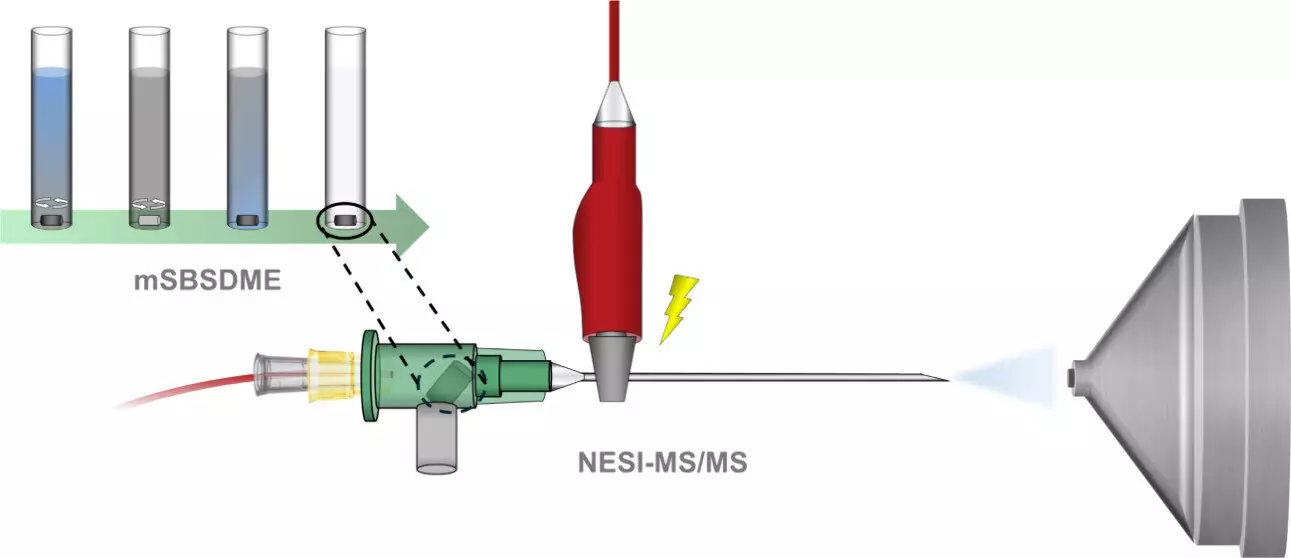As the cannabis debate continues to evolve in Europe and beyond, we are faced with a pressing social predicament. In 2022, approximately 8% of adults in Europe indulged in cannabis, marking it as the most prevalent illicit substance on the continent. This widespread usage carries staggering implications for public health, roads safety, and social policy. The crux of the issue lies not only in cannabis use itself but in the lack of efficient and reliable methods to monitor and analyze its use in a non-invasive manner. The recent development of a saliva-based THC testing method by researchers at the universities of Cordoba and Valencia emerges as a promising solution to tackle this dilemma.
The Breakthrough Technique Explained
The research team has pioneered an innovative analytical technique prominently featuring dispersive microextraction by sorption, utilizing extremely small samples of saliva to detect THC within minutes. Traditional methods require larger samples and lengthier processes that often hinder timely decision-making and accurate assessments. By limiting sample size to just 0.25 mL of saliva, this new approach dramatically reduces the analysis time while enhancing precision and reliability.
At the core of this method lies a miniaturized stirrer bar, which facilitates a unique magnetic agitation process. When introduced to the saliva sample, this stirrer creates a vortex that allows magnetic particles to extract THC effectively. Once this agitation process is halted, the THC-laden particles adhere to the magnet, streamlining the extraction process to just two critical steps. Marisol Cárdenas, a professor at the University of Cordoba, highlights the impressive reduction in procedural complexity by stating that they have minimized steps from five to merely two.
Advantages of Saliva-Based Testing
The primary advantage of utilizing saliva for THC detection is the fluid’s availability and ease of collection, providing a non-invasive alternative to blood or urine tests. Saliva tests also align with an urgent need for rapid, on-site assessments, especially in situations like road safety checks or workplace scrutiny. Speed and efficiency are paramount in these scenarios, and the newly developed technique delivers both.
Moreover, the use of affordable materials, such as stainless steel needles, indicates a commitment to sustainable practices in scientific research. By employing existing materials optimally, researchers ensure that this quick-testing method is not only effective but also accessible for routine laboratories, which can incorporate it into their standard operating procedures without significant economic burden.
Encouraging Future Applications
This innovative testing approach can drastically enhance the monitoring capabilities for cannabis use, assisting law enforcement, employers, and healthcare providers alike. For instance, in the realm of road safety, the rapid detection of THC presence can promote responsible driving and safer streets. Furthermore, it allows employers in safety-sensitive positions to maintain stringent drug-free workplace policies without the delays commonly associated with traditional testing methods.
The researchers—Jaime Millán Santiago and Rafael Lucena, among others—have underscored the sensitivity and precision of this testing methodology. As cannabis legalization gains momentum, the potential applications for such advanced detection techniques are boundless. It heralds a future where monitoring can be conducted seamlessly and efficiently, all while fostering informed discussions surrounding cannabis use as societal attitudes evolve.
A Paradigm Shift in Cannabis Control
The breakthrough achieved by the universities of Cordoba and Valencia marks a significant step forward in the fight against substance misuse. By addressing the practical challenges of THC detection and analysis, they provide not only a tool for measuring cannabis use but also an opportunity for society to reassess its approach toward regulation and health implications tied to cannabis consumption.
In the landscape of drug policy, this swift and reliable testing method could reshape how agencies enforce cannabis laws. Rather than restrictive prohibition, there may be room for more nuanced, risk-based approaches that respect individual rights while prioritizing public health and safety.
As this technology garners further attention and adoption, it sets the stage for broader implications in drug policy reform. By facilitating timely and accurate assessments, we may gradually transcend simplistic narratives surrounding cannabis and shift toward a more informed discourse that recognizes its complexities and diverse applications. The future of cannabis analysis is bright, and innovation is at the forefront of this vital conversation.


Leave a Reply